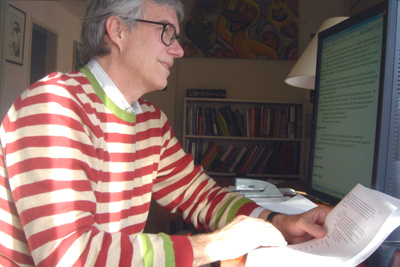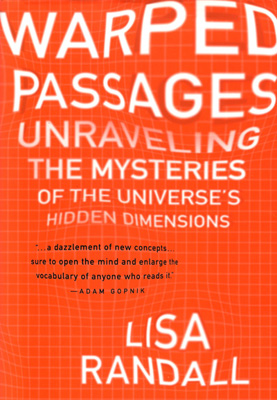I’ve been having some email with John Walker about his article, “Computation, Memory, Nature, and Life,” which I discussed on my blog yesterday.

And I realized that my goal in my novel(?)-in-progress is to have wind, leaves, water, clouds really be computing conscious mind stuff. I want to migrate the beezies to nature instead of doing the opposite. I have this anti-extropian bent, you see, my goal is to sort of deflate the Singularity which is in many ways hype and a category mistake. I want the computers to shrivel away. And I want Nature to wake up.
QUESTION: How SFictionally can I tweak nature to achieve this?

Walker’s suggested obstacle to doing this is, again, that even if a fluttering leaf is capable of class-four universal computation, it doesn’t seem like it gets all that far, as, after all, we don’t see vast innovations coming from the leaves. He feels they don’t get that far because they don’t have reliable long-term memory. The leaf doesn’t “remember” what it was fluttering yesterday or even ten minumtes ago. Even when in a continuous flutter mode, past states are lost to friction and averaging.

So let’s find all-purpose RAM to plug into any old thing. Where to find it? I figure in a parallel brane, or in the subdimensional network architecture of pre-geometry. A little supersymmetric 11-dimensional brane patch, hey?
I’m finding some possible tools for this in a new popular science book by Harvard/MIT professor Lisa Randall.









January 10th, 2006 at 1:01 pm
You could try setting up an experiment that collects two sets of datapoints for many different events.
dataset1 would collect data from things like the temperature, windspeed, random number generator..etc
dataset2 would collect data from wind, leaves blowing, clouds moving, % clouds in sky…etc
then takes the two datasets and look for paterns that seem to go together.
Maybe a better experiment would be to have dataset1 be the output of a program (ie prime number, computing pi…) and then take the data from dataset2 and look for a match.
Another approach would be a analog to digital converter for natural events. Feed the output from the movement of the leaf into a computer that uses that the the input the calculate something. You could create a whole new science of thing A that output calculation B 🙂 (a good place to start would be studying what the indians and farmers use, ie, when ants start acting crazy it is going to rain. so start the experiment for forcasting using an ant farm connected to a computer via video)
The above aproach was used to create random numbers to encrypt data. The output of 3 lava lamps was video taped, and the blob paterns where used to create the random numbers.
The next approach would be, taking something like ants, and re-constructing your problem in a way the ants could solve it for you. For example, you have a robot that needs to get from point a to point b. So you create a scale model of the map, and have the ant go across it. That is the path for your robot. (maybe a slug would be a better match for this problem, ants can go over more terrain then a robot….unless of course you built your robot to mimic the strucut and abilities of the ants)
January 10th, 2006 at 1:36 pm
MAYBE Rudy it like the differenz in the scale of the fish & the scale that weighs it – is it kilos
or meganuwaits – how big is a nother, the nothers i saw ere flying out… the light was blue – thanx fer helping my brain work smaller..
G
January 10th, 2006 at 7:39 pm
Maybe you could store information in the Noether parameters (‘constants of motion’) of dynamical subsystems.
Suppose you have two interacting systems A and B. The total Hamiltonian will be something like H_A + H_B + H_int, where H_A and H_B are the free Hamiltonians for A and B; and the joint state space will be the product of the individual state spaces.
H_A and H_B (if they have the right properties for Noether’s theorem to apply) will define trajectories in A-space and B-space which can be parametrized by constants of motion. A and B interacting can be thought of as A and B following these ‘grooves’ in their respective subspaces, and regularly ‘jumping tracks’ thanks to their interaction. You can think of it as a computation in which the constants of motion are the registers.
So ‘all you need to do’ 🙂 is find a friendly subsystem-decomposition of your would-be natural medium of computation.
January 24th, 2006 at 2:16 pm
So this is about memory? Rings of a tree trunk… What kind of records exist here?
January 26th, 2006 at 8:17 pm
Think I see Rudy making a shift. Well. The “Dude” of all professors. You ZEN you GO. Leave your mark! Kurtzweil may be right, but complexity gets harder to sustain, it needs to sustain itself, when that happens, the AI is here, we have a few years.